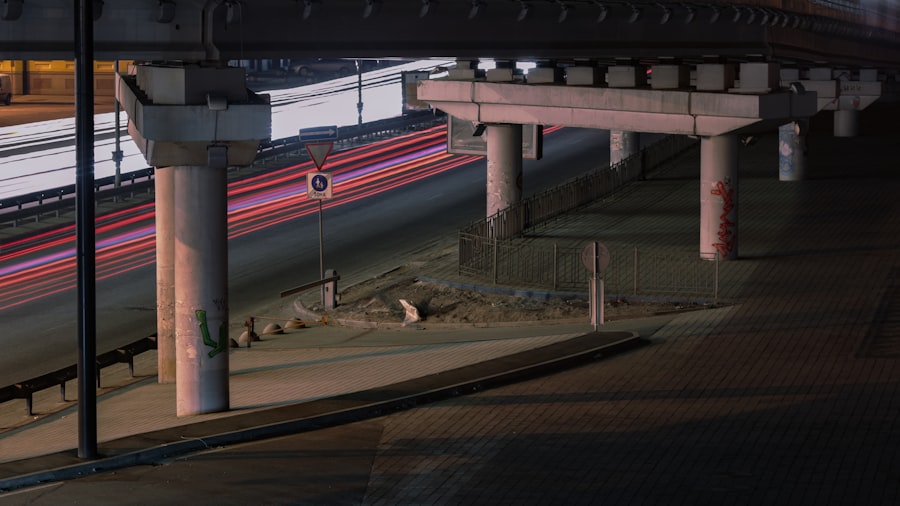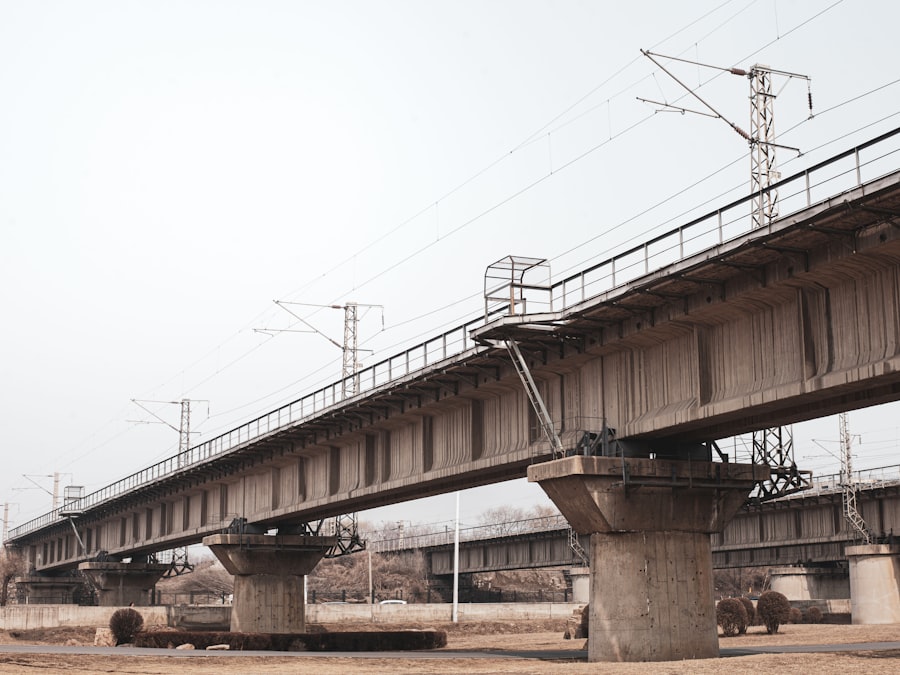Critical infrastructure refers to the essential systems and assets that are vital for the functioning of a society and its economy. These infrastructures encompass a wide range of sectors, including energy, transportation, water supply, healthcare, and information technology. The interdependence of these sectors means that a disruption in one can have cascading effects on others, making the protection of critical infrastructure a paramount concern for governments and organizations alike.
The significance of these systems cannot be overstated; they are the backbone of modern civilization, enabling daily activities and ensuring public safety. The concept of critical infrastructure extends beyond mere physical assets. It includes the processes, personnel, and technologies that support these systems.
For instance, the electrical grid not only consists of power plants and transmission lines but also relies on sophisticated control systems and skilled operators to function effectively. As societies become increasingly reliant on technology, the complexity of critical infrastructure grows, necessitating a comprehensive understanding of its components and their interrelations. This complexity also introduces vulnerabilities that can be exploited by malicious actors, highlighting the need for robust protective measures.
Key Takeaways
- Critical infrastructure refers to the essential systems and assets that are vital for the functioning of a society and economy.
- The threat to critical infrastructure is growing, with silent attacks posing a significant risk to its security and stability.
- Silent attacks on critical infrastructure can have far-reaching and devastating impacts, affecting everything from public safety to national security.
- Vulnerabilities in critical infrastructure can be exploited by cyber attackers, posing a serious threat to its integrity and reliability.
- Cybersecurity plays a crucial role in protecting critical infrastructure from potential attacks and ensuring its resilience and recovery in the face of threats.
The Growing Threat to Critical Infrastructure
In recent years, the threat landscape for critical infrastructure has evolved dramatically.
The rise of sophisticated hacking techniques and the proliferation of malware have made it easier for attackers to infiltrate critical systems.
These threats are not limited to nation-states; criminal organizations and hacktivists also pose significant risks. The increasing frequency and severity of these attacks underscore the urgent need for enhanced security measures. Moreover, the growing interconnectedness of critical infrastructure systems has created new vulnerabilities.
As organizations adopt digital technologies to improve efficiency and reduce costs, they inadvertently expose themselves to cyber threats. For example, the integration of Internet of Things (IoT) devices into critical systems can enhance functionality but also opens new avenues for exploitation. This dual-edged sword presents a challenge for those tasked with safeguarding these vital assets, as they must balance innovation with security.
The Impact of Silent Attacks on Critical Infrastructure

Silent attacks, often characterized by their stealthy nature, can have devastating effects on critical infrastructure without immediate detection. These attacks may involve the infiltration of systems over an extended period, allowing adversaries to gather intelligence or manipulate operations without raising alarms. The consequences of such attacks can be far-reaching, affecting not only the targeted organization but also the broader community that relies on its services.
The impact of silent attacks is particularly concerning because they can lead to gradual degradation of services rather than sudden failures.
This slow erosion of safety can result in public health crises that may not be traced back to the original attack until it is too late.
The insidious nature of silent attacks necessitates a proactive approach to cybersecurity, emphasizing the importance of continuous monitoring and threat detection.
Vulnerabilities in Critical Infrastructure
| Infrastructure Type | Number of Vulnerabilities | Severity Level |
|---|---|---|
| Energy | 45 | High |
| Water | 30 | Medium |
| Transportation | 55 | High |
| Communication | 20 | Low |
Critical infrastructure is rife with vulnerabilities that can be exploited by malicious actors. One significant area of concern is outdated technology. Many critical systems rely on legacy software and hardware that lack modern security features, making them easy targets for cybercriminals.
Additionally, human factors play a crucial role in vulnerabilities; employees may inadvertently compromise security through negligence or lack of training. Phishing attacks, for example, exploit human error to gain access to sensitive systems. Another vulnerability arises from the complexity and interconnectivity of critical infrastructure systems.
As organizations integrate various technologies and platforms, they create potential points of failure that can be exploited. A single weak link in a supply chain or a poorly secured IoT device can serve as an entry point for attackers. Furthermore, regulatory frameworks often lag behind technological advancements, leaving gaps in security protocols that adversaries can exploit.
Addressing these vulnerabilities requires a multifaceted approach that encompasses technology, personnel training, and regulatory compliance.
The Role of Cybersecurity in Protecting Critical Infrastructure
Cybersecurity plays a pivotal role in safeguarding critical infrastructure from emerging threats. A robust cybersecurity framework encompasses various strategies and technologies designed to protect systems from unauthorized access and attacks. This includes implementing firewalls, intrusion detection systems, and encryption protocols to secure sensitive data.
Additionally, regular security assessments and penetration testing are essential to identify weaknesses before they can be exploited. Moreover, cybersecurity is not solely about technology; it also involves cultivating a culture of security within organizations. Employees must be educated about potential threats and trained to recognize suspicious activities.
This human element is crucial in creating a resilient defense against cyberattacks. Organizations should foster an environment where security is prioritized at all levels, from executive leadership to frontline staff. By integrating cybersecurity into the organizational culture, companies can enhance their overall resilience against potential threats.
The Need for Collaboration and Information Sharing

Collaboration and information sharing among stakeholders are essential components in the fight against threats to critical infrastructure. Government agencies, private sector organizations, and international partners must work together to develop comprehensive strategies for protecting vital assets. This collaboration can take many forms, including joint exercises, information-sharing platforms, and public-private partnerships aimed at enhancing security measures.
Information sharing is particularly important in identifying emerging threats and vulnerabilities. By exchanging intelligence about potential risks and attack vectors, organizations can better prepare themselves to defend against cyberattacks. Additionally, collaborative efforts can lead to the development of best practices and standards that enhance overall security across sectors.
As threats continue to evolve, a united front will be crucial in mitigating risks and ensuring the resilience of critical infrastructure.
Case Studies: Silent Attacks on Critical Infrastructure
Several case studies illustrate the impact of silent attacks on critical infrastructure and highlight the need for vigilance in cybersecurity practices. One notable example is the 2015 cyberattack on Ukraine’s power grid, which resulted in widespread blackouts affecting hundreds of thousands of residents. Attackers infiltrated the grid’s control systems over several months before executing their plan, demonstrating the effectiveness of silent attacks in causing significant disruption.
Another case study involves the 2020 attack on a water treatment facility in Florida, where hackers attempted to poison the water supply by manipulating chemical levels remotely. Although the attack was thwarted before any harm was done, it underscored the vulnerabilities present in critical infrastructure systems and the potential consequences of silent attacks. These incidents serve as stark reminders of the importance of proactive cybersecurity measures and continuous monitoring to protect vital assets.
The Potential Consequences of a Successful Attack
The consequences of a successful attack on critical infrastructure can be catastrophic, affecting not only the targeted organization but also society at large. Disruptions to essential services such as electricity, water supply, or healthcare can lead to public panic and loss of trust in institutions. In extreme cases, such attacks can result in loss of life or severe injury due to compromised safety measures.
Furthermore, the economic impact of such attacks can be profound. Businesses may face significant financial losses due to operational downtime or damage to their reputation. Recovery from an attack often requires substantial investments in cybersecurity improvements and system repairs, diverting resources from other critical areas.
The ripple effects can extend beyond immediate financial losses; long-term damage to public confidence in infrastructure reliability can hinder economic growth and stability.
Steps to Mitigate the Threat to Critical Infrastructure
Mitigating threats to critical infrastructure requires a proactive approach that encompasses multiple strategies. First and foremost, organizations must conduct thorough risk assessments to identify vulnerabilities within their systems. This process should involve evaluating both technological weaknesses and human factors that could compromise security.
Implementing robust cybersecurity measures is essential for protecting critical infrastructure from potential attacks. Organizations should invest in advanced technologies such as artificial intelligence-driven threat detection systems that can identify anomalies in real-time. Regular training programs for employees are also crucial in fostering a culture of security awareness and ensuring that staff are equipped to recognize potential threats.
Additionally, organizations should establish incident response plans that outline procedures for addressing cyberattacks when they occur. These plans should include clear communication protocols to ensure that stakeholders are informed promptly during an incident. By preparing for potential threats and having a response strategy in place, organizations can minimize damage and recover more effectively from attacks.
The Importance of Resilience and Recovery Planning
Resilience is a key component in protecting critical infrastructure from both cyberattacks and other disruptions. Organizations must not only focus on preventing attacks but also on their ability to recover quickly when incidents occur. This requires comprehensive recovery planning that outlines steps for restoring services and minimizing downtime.
A resilient organization is one that has established redundancies within its systems to ensure continuity during disruptions. For example, backup power sources can help maintain operations during electrical outages caused by cyberattacks or natural disasters. Additionally, regular testing of recovery plans through simulations can help organizations identify weaknesses in their response strategies and make necessary adjustments.
Ultimately, resilience is about more than just recovery; it involves fostering a mindset that prioritizes adaptability in the face of evolving threats. Organizations must remain vigilant and continuously assess their security posture to ensure they are prepared for whatever challenges may arise.
The Future of Protecting Critical Infrastructure
As technology continues to advance at an unprecedented pace, the future of protecting critical infrastructure will require innovative approaches to cybersecurity. Emerging technologies such as artificial intelligence and machine learning hold promise for enhancing threat detection capabilities and automating responses to incidents. However, these advancements also introduce new challenges as adversaries become more sophisticated in their tactics.
The future will likely see an increased emphasis on collaboration among stakeholders across sectors and borders. As threats become more complex and interconnected, sharing information about vulnerabilities and best practices will be essential for developing effective defenses against cyberattacks. Public-private partnerships will play a crucial role in fostering innovation while ensuring that security remains a top priority.
In conclusion, protecting critical infrastructure is an ongoing challenge that demands vigilance, collaboration, and adaptability in an ever-evolving threat landscape. By understanding vulnerabilities, investing in cybersecurity measures, and fostering resilience through recovery planning, organizations can better safeguard these vital assets for future generations.
In the ongoing discourse about the vulnerabilities of critical infrastructure, the article “The Quiet War on Critical Infrastructure” sheds light on the subtle yet significant threats facing essential systems. A related piece that further explores these themes can be found on the website “In The War Room.” This article delves into the strategic dimensions of infrastructure security, offering insights into the measures being taken to safeguard these vital assets. For more information, you can read the related article by visiting In The War Room.
WATCH THIS! The FSB’s Hidden War on Europe’s Pipelines
FAQs
What is critical infrastructure?
Critical infrastructure refers to the systems and assets that are essential for the functioning of a society and economy. This includes sectors such as energy, transportation, water, and communication.
What is the quiet war on critical infrastructure?
The quiet war on critical infrastructure refers to the covert and often subtle attacks on the systems and assets that are essential for the functioning of a society and economy. These attacks can come in the form of cyber-attacks, espionage, or sabotage.
What are the potential consequences of attacks on critical infrastructure?
Attacks on critical infrastructure can lead to widespread disruption, economic damage, and even loss of life. For example, a cyber-attack on a power grid could result in a widespread blackout, affecting businesses, hospitals, and households.
How are governments and organizations working to protect critical infrastructure?
Governments and organizations are investing in cybersecurity measures, conducting risk assessments, and implementing resilience strategies to protect critical infrastructure. This includes measures such as improving network security, enhancing information sharing, and developing response plans.
What are some examples of attacks on critical infrastructure?
Examples of attacks on critical infrastructure include the Stuxnet virus, which targeted Iran’s nuclear facilities, and the 2015 cyber-attack on Ukraine’s power grid, which resulted in a widespread blackout. These incidents highlight the vulnerability of critical infrastructure to malicious actors.




